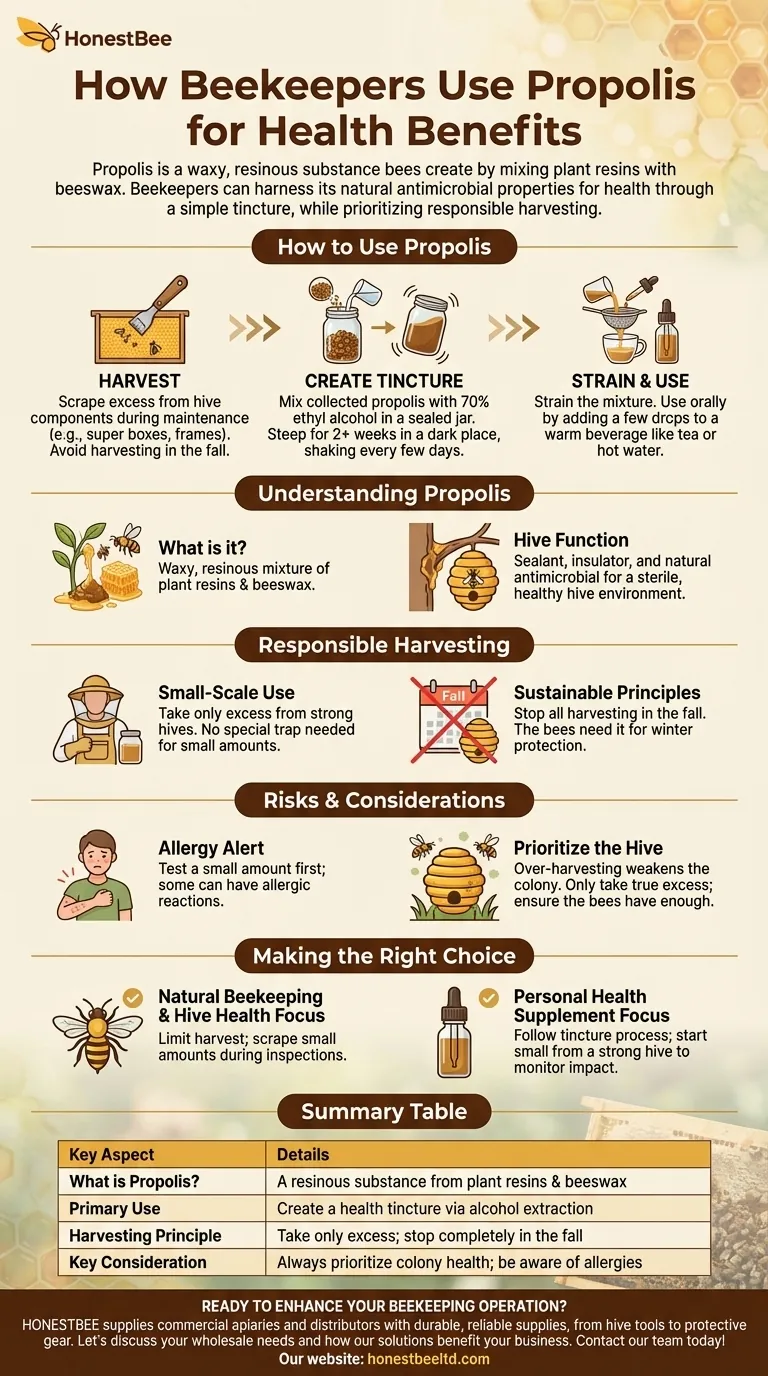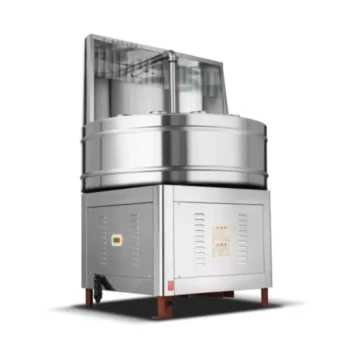For the beekeeper, propolis can be used for its health benefits by creating a simple tincture. This involves harvesting the sticky resin from the hive, steeping it in high-proof ethyl alcohol for a couple of weeks, and then straining the liquid. The resulting extract can be taken orally to leverage its natural antimicrobial properties.
Propolis is a valuable resource for both the hive and the beekeeper. The key is to transform this raw hive material into a usable health supplement through a simple alcohol extraction, while always prioritizing responsible harvesting that does not compromise the colony's health.

Understanding Propolis and Its Role
What is Propolis?
Propolis is a waxy, resinous substance that bees create by mixing plant and tree resins with their own beeswax. It is a critical material for the structural integrity and health of the colony.
Its Function Within the Hive
Bees use propolis as a sealant to waterproof the hive and fill unwanted gaps. It also acts as a natural insulator, helping the colony regulate temperature and survive the winter. Due to its antimicrobial properties, it helps maintain a sterile environment inside the hive.
How to Responsibly Harvest Propolis
For Small-Scale Personal Use
If you only need a small amount of propolis, you do not need a special trap. The simplest method is to scrape it from harvested super boxes, frames, and other hive components during routine maintenance or after a honey harvest.
Principles of Sustainable Harvesting
Responsible harvesting ensures the colony is not put at risk. Only take propolis from hives that are producing an excessive amount.
Crucially, you should stop all propolis harvesting in the fall. The bees need this substance to seal the hive and protect themselves during the cold winter months.
Creating a Propolis Tincture
The Extraction Process
The most common method for creating a usable supplement is an alcohol-based tincture.
First, gather your collected propolis. Mix it with 70% ethyl alcohol in a sealed jar. The ratio is not exact, but a common starting point is to have enough alcohol to fully submerge the propolis.
Let the mixture steep for at least two weeks in a dark place. Be sure to shake or mix the jar every few days to aid in the extraction.
Straining and Final Preparation
After two weeks, the alcohol will have dissolved the beneficial compounds from the propolis, turning into a dark liquid.
Strain this liquid through a fine-mesh strainer or cheesecloth to remove all solid particles. The resulting liquid is your finished propolis tincture.
How to Use Your Tincture
The tincture can be used orally. A common practice is to add a few drops to a warm beverage like tea or hot water.
Understanding the Risks and Considerations
The Potential for Allergic Reactions
It is critical to be aware that some individuals can have an allergic reaction to propolis. Before using it regularly, it is wise to test a very small amount to ensure you do not have a sensitivity.
Always Prioritize the Hive
Never forget that propolis is essential for the bees. Over-harvesting can weaken a colony, making it vulnerable to weather and disease. Your goal should be to harvest only the true excess, leaving more than enough for the bees' own needs.
Making the Right Choice for Your Goal
As a beekeeper, your approach to propolis should align with your primary objective.
- If your primary focus is natural beekeeping and hive health: Limit your harvest to scraping small amounts during normal inspections and leave the hive with ample resources for winter.
- If your primary focus is creating a personal health supplement: Follow the tincture process, but start with a small harvest from a strong hive to ensure you are not impacting its health.
Ultimately, using propolis is a way to share in the natural products of the hive, but this privilege comes with the responsibility to act as a steward of your colony's well-being.
Summary Table:
| Key Aspect | Details |
|---|---|
| What is Propolis? | A resinous substance bees create from plant resins and beeswax. |
| Primary Use | Create a health tincture via alcohol extraction. |
| Harvesting Principle | Take only excess propolis; stop completely in the fall. |
| Key Consideration | Always prioritize colony health; be aware of potential allergies. |
Ready to enhance your beekeeping operation?
As a beekeeper, you understand the importance of quality equipment for a thriving apiary. HONESTBEE supplies commercial apiaries and beekeeping equipment distributors with the durable, reliable supplies needed for success. From hive tools to protective gear, we support your commitment to bee health and productivity.
Let's discuss your needs and how our wholesale-focused solutions can benefit your business. Contact our team today!
Visual Guide

Related Products
- Professional Wide Blade Honey Scraper for Beekeeping and Honey Processing
- Professional Long-Handled Silicone Honey Scraper for Beekeeping
- Honey Wax Separating Wax Press with Metal Screw Wax Separator Machine
- Stainless Steel Honey Press Wax Press with Tank
- Stainless Steel Pail Perch Bucket Bench
People Also Ask
- What are wax cappings in the context of honey extraction? The Beekeeper's Guide to a Second Harvest
- What tools are available for uncapping honey? A Guide to Choosing the Right Tool for Your Operation
- Why is uncapping necessary in honey harvesting? Unlock Your Honey Yield & Preserve Comb
- What equipment do you need to make honey? A Complete Guide to Starting Your Apiary
- How can a capping scratcher be used with an electric knife? Boost Efficiency and Honey Yield



















